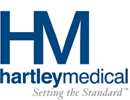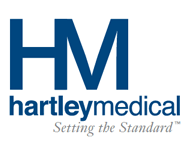One of my mentors, Dr. Lawrence Trissel, a well-known expert in chemical testing of pharmaceuticals and stability studies in sterile compounding, conducted a study where he took two lab technicians at the end of the day, and had them do 100 preparations, drawing up liquid-growth media into 100 syringes. Once all were tapped and set aside, he had the syringes tested for contamination. Contamination rate: 5%.
He then had them repeat the study on a separate day under identical conditions ““ except for the fact that he had them wipe their hands with alcohol after filling every third syringe. The Contamination rate dropped by about 2% — simply from wiping their hands down with alcohol more frequently.
At a recent conference held by the AAPS (American association of pharmaceutical scientists) my attention was drawn to pharmaceutical manufacturing booth. Inside the booth was a large TV screen playing a video of people ““ dedicated quality assurance technicians — properly gowned and undertaking a very high risk, high-purity-parameter task. Their actions so pure and perfect and powerful that it was hypnotic.
In the video, I observed individuals filling vials with drugs, much in the same was as we do at Hartley Medical. The next step, however, was both impressive and surprising. When the person finished with the machine, she walked into another room where another technician was waiting. The technician took a plate about the size of the palm of your hand ““ a growth plate and removed the lid, extending it out to the other technician, who took their fingertips and applied them to the plate in order to see what bacteria might be present as a result of production involvement. This highly refined and analytical process is done in the exact same way at Hartley.
This test is simply known as Fingertip Assessment ““ and will soon be shown on our own Hartley Medical website. It is an integral part of the unequalled service profile that we pride ourselves on here at Hartley ““ the ensuring of uncompromising quality in our solutions and our environment.
That being said, it is important to note that the current industry standard requires you to perform a Fingtertip Assessment once a year.
Yes, I said “once a year.
What’s more, the USP 797 rules governing Fingertip Assessment allow for the testto occur immediately after one has washed and placed on sterile gloves. Performing the assessment in such a short time frame allows for almost no contamination to occur, and therefore shows very little, if not nothing, about the actual cleanliness of the facility.
Contrast this procedure with what we do at Hartley. We perform Fingertip Assessment our staff between the hours of 1 and 5pm — during active use. We recognize that as soon as you reach for a syringe, a needle, a vial”¦ the operation becomes suspect and your previously aseptic gloved fingertips might be contaminated. This is why we wipe our hands down every other preparation ““ constantly scrubbing hands with alcohol. And this why when we perform random Fingertip Assessments throughout the work day, we can be confident that the results genuinely reflect Hartley’s quality.
In many ways our objectives are simple: to keep the contamination rate down throughout the process of sterile compounding; to maintain an absolutely minimum bio-burden; and to provide the absolute highest quality care.
That is quality assessment. That is Hartley Medical.


Leave A Comment